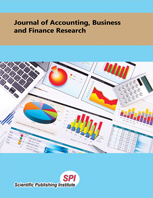Cultural Relevance to Sustainability Reporting in Asian and European Banking
DOI:
https://doi.org/10.20448/2002.41.9.19Keywords:
Sustainability reporting, Hofstede cultural dimension, National cultures, Financial services.Abstract
The purpose of this paper is to test whether significant differences in sustainability reporting exist between banking in Asian and European. The sample consists of 65 banks from 15 countries in Asian and 18 countries in European. The division of Asian and European is derived from the Hofstede cultural dimension. This study uses GRI financial services sector supplement to measure sustainability reporting. Non-parametric (Mann-Whitney) tests are computed to achieve the stated objective. Result reveals that sustainability reporting in European is higher than in Asian. This supports the first hypothesis. Differences test results also support hypothesis that there is a significant differences in sustainability reporting between the two regions. However, differences test result per category show that there is no significant differences for the economic category and there are significant differences for both other categories, namely social and environmental. The finding suggests that sustainability reporting is likely to be influenced by national cultures. With regard to data, Hofstede dimensions were identified and developed over 30 years ago and no development over time with dimensional scores. Rather than comparing two countries, this study tries to analyze on a broader scale, ie territory.


